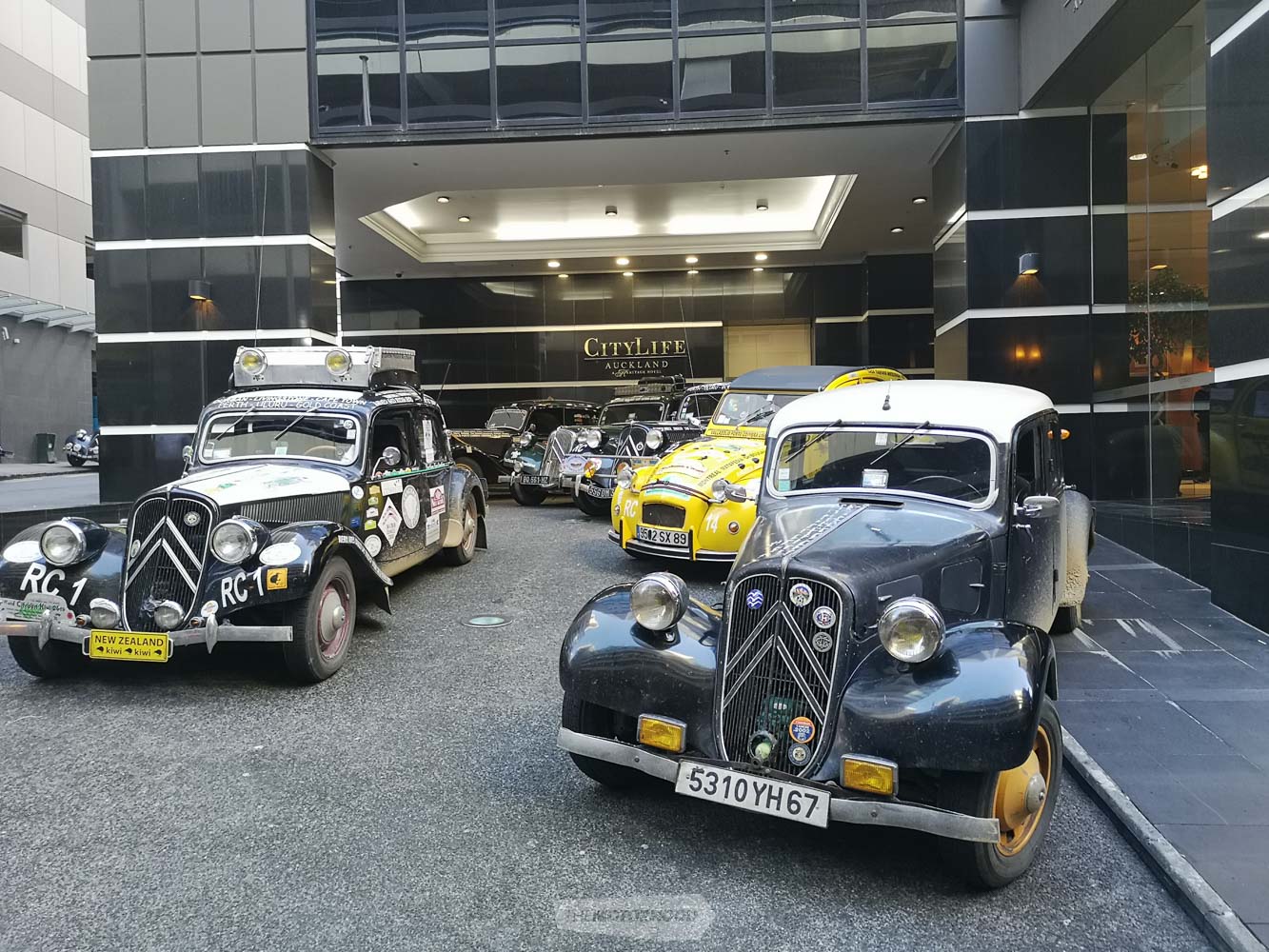For its 16th adventure around the world, the French association
Traction sans Frontières selected New Zealand.

Report written by Philippe and Nana Lasson
Several reasons explain our choice. For several years Bruce Williams, Chairman of Citroën Canterbury Car Club, and Maureen Dale from Ashburton joined us and followed our European trips to the Arctic circle, Portugal and Ireland. We spoke very often of the natural beauties of New Zealand, and we wanted to finish our Round-the-World tour in Oceania, which was initiated in 1998 in Australia with the Tracbar Dundee Rallye. That was a good country, too, with so many people involved in classic car preservation, Citroëns being our target.
We prepared for our Raid Citroën Kiwi 2019 with a long trip around the two islands in February and March 2018.
Our conclusion … we were right: New Zealand is a paradise for vintage car drivers. Extraordinary landscapes, wonderful roads (even the unsealed ones), very nice population, good wines, and many Citroën enthusiasts!

Eighteen Citroëns were shipped from France (52 days on sea). We were so scared by your very hard sanitary control; our cars were inspected, controlled two months before being shipped, and cleaned as never before! We did 4500kms on the two islands, visiting all the tourist points of interest. We left Franz Josef 24 hours before the destruction of the bridge, fell in love with your rain forest and its ferns, swam with dolphins, admired colonies of seals at Kaikoura, spent almost a whole day in Bill Richardson’s museum, followed the gravel all around Coromandel Peninsula (for us, one of the most beautiful landscapes we had ever seen), took a wonderful picture of our beloved Citroëns in front of the Sound Shell in Napier, and met tens and tens of smiling people who took hundreds of pictures of our cars. Gorgeous!
Our group consisted of 17 vehicles: Light Fifteens, Big Fifteens, and one 2CV ‘007’. To be honest, one of the ‘Tractions’ is a Trac’Toy (Traction plus Toyota), born in the brain of a wizard who, 20 years ago, adapted the body of a Traction on a 4X4 Toyota chassis. The result is really amazing, and the reactions of the admirers were too!
Armstrong Motor Group helped Tractions Sans Frontières in loaning us a nice C3 Aircross used by our video team who realizes the films of our rallies. Warmest greetings.

Many New Zealand Citroën enthusiasts helped us too — many thanks.
With this 16th international trip, Tractions Sans Frontières arrives at the end of a wonderful loop. We visited all the continents with our cars, all of which are between 65 to 80 years old.
We travelled in Northern, Southern, Central, and Eastern Europe; in North and South America (Canada, Argentina, Brazil, Bolivia); in South East Asia (Malaysia, Thailand), in Africa and in Oceania. A lot of countries for a lot of souvenirs. As we used to say: “we create emotions for instants collectors”.
For all of us at Tractions Sans Frontières, New Zealand will no doubt remain the best trip we ever had.

Mechanic assistance: one mechanic follows our trips (he is benevolent, too, as the organizers have to pay for his participation) and takes care of the cars. This year, he only had little problems to fix: one starter, one transmission, and plugs to change — that’s all.
It’s quite amazing to note that Tractions Sans Frontières is the only association in the world that organizes such long trips with Tractions Citroën. All together, since 2015, we did 2,250,000kms and not always on sealed roads! All the cars always went back home! Certainly a world record …
For Tractions Sans Frontières, Philippe and Nana Lasson



